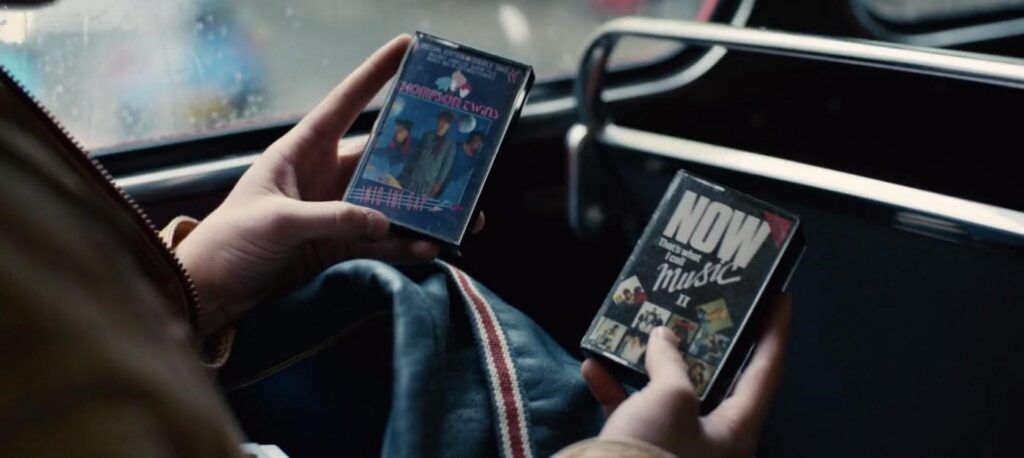
How Black Mirror’s Bandersnatch Transformed Home Entertainment!
Arun Nagarajah
March 24, 2022“Who Wants to Be a Millionaire?’ is a show with a broadcast history of 28,848,000 viewers averaging No. 1 against all other television shows in the 1999–2000 season. So, to say that people love interactive, mind-bending audience experiences is a highly fair statement.
One of the biggest challenges in the entertainment industry of the coming Web 2.0 era is determining how to keep viewers engaged. With an infinite number of streaming options, it’s hard to make watching a single program feel like a worthwhile use of time.
Moving Forward:
As we shift from television to streaming as our primary viewing method, we are constantly developing new and innovative ways to watch content. One such innovation is the choose-your-own-adventure movie or interactive film. The viewer is able to control what happens next by making selections for the main character(s) of the story.
To date, the most notable example of this format surfaced when Netflix has released a new Black Mirror film, one that doesn’t just tell you a story—it lets YOU tell it.
Related article: Gamification in 2022: Future of Immersive Technologies
Black Mirror: Bandersnatch (Netflix 2018)
In the mere few hours that Bandersnatch aired, it was trending on Twitter! Fans with the fear of Stefan’s fate in their hands expressed their emotions through memes and snippets.
The Black Mirror universe is one that focuses on technology and its potentially disastrous side effects on society. Much like its source material, Bandersnatch makes heavy use of technology in its storytelling. Giving viewers the opportunity and the ability to choose their own path through a simplified story was the best way for Netflix to forecast any potential roadblocks that may lay ahead for a more ambitious concept such as Bandersnatch.
Objectives
Netflix had already been experimenting with interactive content for some time within the stream of kids programming before approaching Black Mirror. The opportunity to create the first interactive movie for adults, giving young viewers are prompted to make decisions for protagonist Stefan (Fionn Whitehead) through simple yes/no questions that pop up throughout the film. They must decide how Stefan will react to situations as well as what he will do next, creating a unique experience each time you watch it again with new choices being made by players who’ve seen them before but still want more out of their adventure.
Choice
“The strongest principle of growth lies in human choice.” – George Eliot
Sounds empowering, right? But what does it really mean? Our lives are curated to the point that we don’t even notice how many choices we have anymore. We are bombarded with choices every single day.
Our phones offer us a dozen different games to play at any given moment; our television shows give us the option to binge old episodes or watch a new show; our social media lets us decide which posts to like, share, or skip over. With all that, home entertainment is leveling up.
How many times have you pondered over a movie ending? Analyzing what the protagonist might have done differently to end up with a happy ending?
In Bandersnatch, you get the opportunity to make choices for the main character, Stefan that will influence not only his actions but also the way others perceive him and his decisions. Stefan’s choices—your choices—will lead him to different outcomes and experiences, some of the more positive than others. This method provides viewers the choice to interfere, creating an interactive mode between the two.

Key Features of Bandersnatch
Transitions between scenes:
The film consists of short scenes that are meant to fit seamlessly together despite having a branching storyline. When the viewer is in the choice menu, the film will continue to play in the background instead of pausing until a path is chosen; the characters are often engaged in conversation when this occurs.
However, no new information is given to the player while the choices are up, instead, the characters will repeat what was said before, either to remind the player of the current conundrum or construe what is being asked.

User interface:
The user interface of Bandersnatch is a simple one. The viewer is presented with the default Netflix timeline, which they can use to rewind or fast-forward; this timeline also includes the usual pause and play buttons. To the right of the timeline are optional subtitles, which can be turned on or off.
The remainder of the page is taken up by menus and dialogue boxes. No status bars or gauges are visible to the viewer and no maps or other visual aids are present, either; this gives Bandersnatch a fresh and clean look that many viewers will appreciate.
Related article: Science Behind Game-based Learning and Gamification
Controls:
Controls are easy! In general, on a PC, the viewer makes their choices by clicking on the options given to them. If you need to rewind, press the left arrow key; if you need to fast forward, press the right arrow key. If you’re using a keyboard alone, the space bar will pause the scene, and pressing the up or down arrows will control your volume.
Conclusion:
As technology continues to advance, there are more possibilities than ever before for the way we tell stories. With the introduction of interactive television like Netflix’s Bandersnatch, it’s clear that there’s a whole new world beyond just passively watching to explore. But what does that mean for the future? Contact eVULX, for digital and virtual games for individuals or organizations to upskill learning for the future.
9.08 & 9.09, Block E Phileo Damansara 1,
9, Jalan 16/11, 46350 Petaling Jaya, Selangor
Telephone: +60122254456
Email: [email protected]
(202001021557) (1377877-X)
All Rights Reserved

